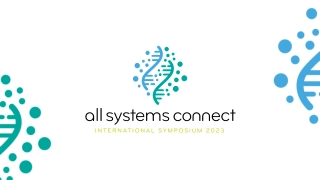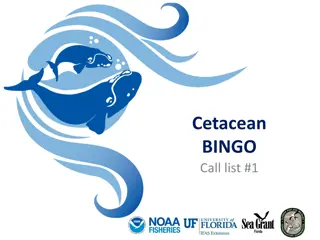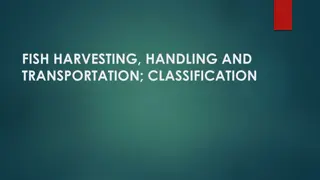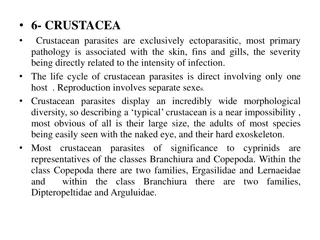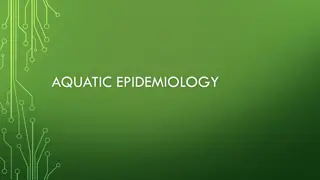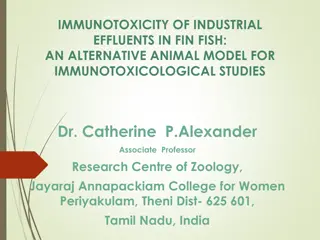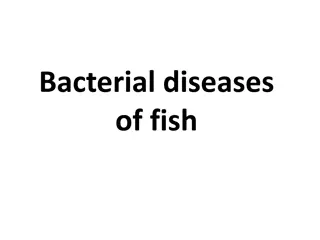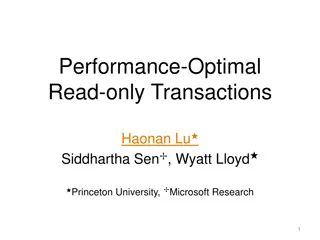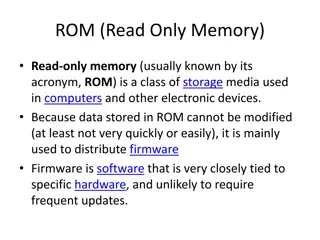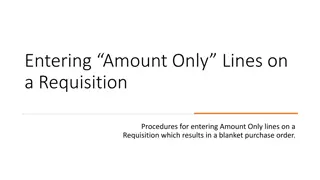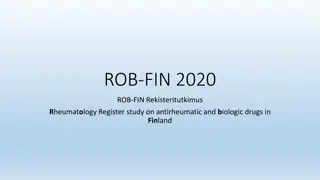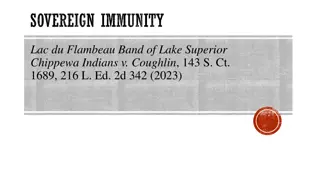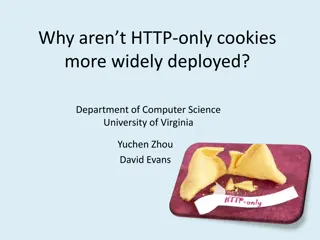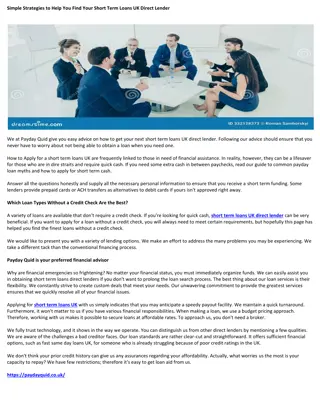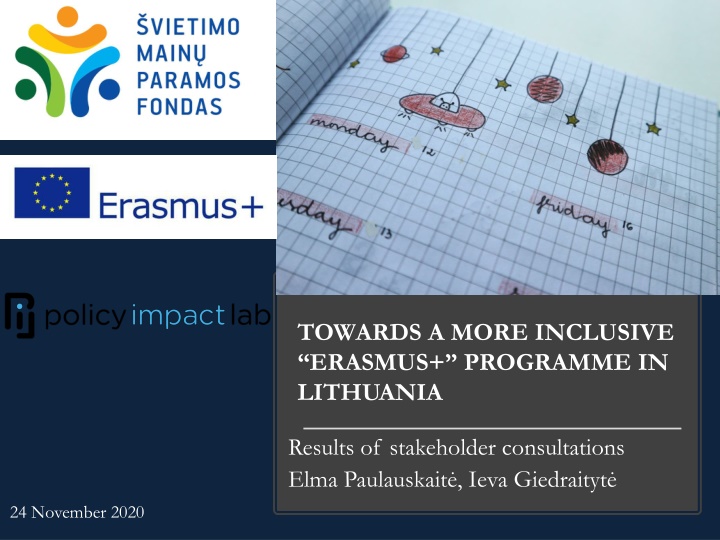
Enhancing Inclusivity in Erasmus+ Program in Lithuania
Explore the results of stakeholder consultations focusing on barriers to inclusion in Lithuanian education sectors, target groups excluded, challenges faced, and solutions proposed. The research delves into promoting equal opportunities for participants with special needs in Erasmus+, including those with disabilities, health issues, and economic or social obstacles.
Download Presentation

Please find below an Image/Link to download the presentation.
The content on the website is provided AS IS for your information and personal use only. It may not be sold, licensed, or shared on other websites without obtaining consent from the author. If you encounter any issues during the download, it is possible that the publisher has removed the file from their server.
You are allowed to download the files provided on this website for personal or commercial use, subject to the condition that they are used lawfully. All files are the property of their respective owners.
The content on the website is provided AS IS for your information and personal use only. It may not be sold, licensed, or shared on other websites without obtaining consent from the author.
E N D
Presentation Transcript
TOWARDS A MORE INCLUSIVE ERASMUS+ PROGRAMME IN LITHUANIA Results of stakeholder consultations Elma Paulauskait , Ieva Giedraityt 24 November 2020
Aim of research Terminology Methodology Results Target groups (beneficiaries) Challenges, solutions and key players Discussion Contents 24 November 2020 2
AIM 24 November 2020 3
To understand barriers to inclusion in Lithuanian education sectors: Target groups who is excluded; Challenges for more inclusive education and education exchange programmes; How to address them and who are the duty bearers. Aim 24 November 2020 4
TERMINOLOGY 24 November 2020 5
Erasmus+ encourages equal opportunities and inclusion for participants, who have special needs due to: Disability; Health problems; Learning difficulties; Economic obstacles; Social obstacles; Geographical obstacles; Cultural differences. Concepts 24 November 2020 6
METHOD 24 November 2020 7
Consultations with social partners General education Adult education Higher education Vocational training 24 November 2020 8
Participants in mobility projects; Educators; Project coordinators; Educational institution administrations; NGO Lithuanian National Union of Students (LSS); Researchers; State authorities: Ministry of Education, Science and Sport, Ministry of Social Security and Labour, the State Studies Foundation; Government Strategic Analysis Centre, National Agency for Education, Department for the Affairs of the Disabled, Qualifications and Vocational Education and Training Development Centre, Employment Services, Education Exchanges Support Foundation. Participa nts: (in total ~60) 24 November 2020 9
Focus groups: 3 hours Zoom Target groups who is excluded? Vision what do we want to achieve? Challenges what stands in the way? Survey: Surveymonkey Recommendations for responding to challenges measures and players. Method 24 November 2020 10
CLUSTERING 24 November 2020 11
RESULTS TARGET GROUPS 24 November 2020 12
Children, youth and adults with individual needs Families of persons with individual needs Key target groups Educators and school administrations 24 November 2020 13
1. Children with individual needs Learning difficulties (also when returning from abroad) Disability Health problems Other needs General Education (GE) Risk groups (psychological, physical violence, bullying) Kas yra atskirtyje?
1. Youth and adults with individual needs Other individual needs Disability Grey zone Children of parents with no higher education Children from small towns Children from orphanages People experiencing financial difficulties People with small children, lonely parents Working people Senior age students Higher Education (HE) Who is excluded?
Vocational Education & Training (VET) 1. Youth and adults with individual needs Welfare recipients Survivors of violence Children from orphanages Single mothers Children from families with low income People with emotional disorders Persons with low literacy Pupils from special schools Only VE Not in Education, Employment or Training (NEETs) Immigrants and refugees LGTBTQI Senior people VE & AE Only AE Homeless people/ with tendency to be asocial Disabled (mental, physical, intellectual development disorders) People with individual needs Persons from villages Adult Education (AE) Religious, ethnic, linguistic minorities Jobless (especially long-term, without professional qualification) Parents of children with special needs Imprisoned or returning from imprisonment Men/ women (inclusion based on sex) Employees of low qualification Various subcultures Re-immigrants
2. Families of persons with individual needs Young families Families with low income Families of children with disabilities Families whose members have no higher education Families with smaller children (especially single parents) 17
3. Educators and school administrations Assistants & other support staff Accompanying persons Mokytojai Educators 18
SUMMARY I DISABILITY/ HEALTH PROBLEMS (relevant in all sectors) Disability due to physical, mental health. SOCIAL OBSTACLES (more relevant after general education) Origin: orphans, single parent families, parental education, income (Higher Education, VET); Marital status: single parents, parents of small children or children with disabilities; Senior people; Persons exposed to violence/ coercion/ bullying; Persons experiencing self-esteem issues. 24 November 2020
SUMMARY II ECONOMIC OBSTACLES (more relevant after general education) Jobless/ inactive persons, those with low income/ low level of education/ qualification. Homeless persons, incarcerated persons, persons under probation. GEOGRAPHICAL OBSTACLES: People from small towns. CULTURAL OBSTACLES: Ethnic, religious, linguistic minorities; Refugees, immigrants and re-immigrants. LEARNING DIFFICULTIES: Persons with low literacy and foreign language knowledge. 24 November 2020
Learners Educators/ accompanying persons Key target groups Family and community Society (Educational & other) institutions 24 November 2020 21
RESULTS Challenges, solutions and key players 24 November 2020 22
23 Challenges of mobility programme administration (HE, VET, AE) Leadership/ policy of educational institutions Policy and systematic cooperation Societal prejudices Internal restricting factors of the participants (HE, VET, AE) Difficulties managing projects involving the target group (VET) Prejudices, competences of educators (GE, AE) Enabling environment (GE, VET) Nature of work of accompanying persons (VET) Dissemination of results and ensuring sustainability (AE) Cooperation with parents (VET) Limited abilities of participants (AE) Content and quality of education programmes (AE) Information accessibility (HE) 4-mentioned in all the sectors 3-in 3 sectors 2-in 2 sectors 1-in 1 sector 24 November 2020
Policy and systematic cooperation: what is lacking? Systematic outlook on inclusion, goal setting, implementation and sustainability National inclusion strategy Inter-institutional cooperation Addressing underlying causes, not consequences of exclusion Identification of target groups and engaging them in decision making Systematic inclusion of all interested parties Consultation and joint work (co- creation) Evidence and needs- based practice support/services Involvement of NGO sector in problem solving Assistance to educational institutions supporting competences of municipal authorities Developing services environment accommodation, psychological support, mentorship 24 November 2020 24
Policy: what should be done? Ministry of Education, Science and Sport: Person/ working group(s) overseeing inclusion analysis of challenges, strategy development, ensuring that different education sector needs are reflected. Inter-ministry document (Ministry of Social Security and Labour, Ministry of Interior) envisaging a national inclusion strategy with a chapter on education, including: target groups, reasons behind their exclusion, measures to tackle exclusion, allocated funds and institutions responsible for implementation, foreseeing accountability to the Office of the Government (+ several year plans, monitoring, evaluations). Other mechanisms ensuring inter-institutional cooperation (and involvement of NGOs). National programme for enhancing inclusive education (General Education). 24 November 2020 25
Policy: key words Recognising inclusion as a priority Continuity of existing effective measures Identification of excluded groups Consultations with target group Inclusion (and support) of NGOs Public consultations Feedback and feedback response mechanisms Interdisciplinary, evidence-based solutions Dialogue Enabling specialists to work inclusively (training courses) Dissemination (wider public, specialists) 24 November 2020 26
Policy and practice of educational institutions: what is lacking? Strategy/ knowledge/ methodological tools/ adjusted curriculums. Safe environment (Higher Education, VET, General Education) Specialists prepared and able to work with the target group (for Adult Education language knowledge). Active uptake of additional support opportunities by participants. Information dissemination more complicated to learn about, notify about individual needs. Closer cooperation with parents, other educational organisations, mobility programme administrators. Consistent practice Individual people, separate educational institutions determine a lot. Inclusion measures Competencies and prejudices EU General Data Protection Regulation (GDPR) 27
Policy and practice of educational institutions: what should be done? National/ local management level (Government, Ministry of Education, Science and Sport, National Agency for Education, Education Exchanges Support Foundation, municipalities, their education subdivisions, pedagogical psychological services, Social Support Centres) strategy again. Financial support to human, infrastructure, methodology resources (to drive, motivate, not to burden for example, budget structure); Guidelines/ recommendations, cooperation platforms how to respond to challenges? Working with attitudes, leadership abilities of school directors, competencies of the institutions (e.g. programme Leader Time ); Granting autonomy to schools for setting goals and indicators assessment of educational institutions based on inclusivity; Equal attention to all the sectors (Adult Education neglected); Smooth transition from specialized to mainstream education (GE). 24 November 2020 28
Policy and practice of educational institutions: what to do? School level : Persons responsible for international cooperation encourage management to prepare inclusive strategy; International cooperation strategies plans (inclusion as horizontal dimension) Positive leadership of managers cooperation (within schools, with others); Encouraging mobility, creating favourable conditions, identifying good examples and sharing good practices. Feedback mechanism to identify, record, bring to higher levels (inter-institutional, local, national) and follow-up. Organising seminars, trainings. institutional strategic 24 November 2020 29
Policy and practice of educational institutions: what should be done? Important: Information dissemination/ visibility (lessons learned, good examples); Cooperation, inclusion of interested groups, experts; Courses, seminars; Enabling accountability. 24 November 2020 30
Societal prejudices: whats lacking? Failure to raise and communicate inclusion as a social phenomenon GE, HE, VET Attitude of parents/ educators/ school administrations towards children with individual needs. Lack of knowledge, empathy, perception of the importance of inclusion of various groups. Parents do not always trust the abilities of the children/ supervising persons. Erasmus+ image in society (fun rather than education). GE, VET HE, VET Image of vocational training. AE Lack of solidarity among various age groups, discrimination on the basis of age. [Insufficient] sector importance in the education system. 24 November 2020 31
Societal prejudices: what to do? Ministry of Education, Science and Sport, private communication agencies professional communication strategy. Ministry of Social Security and Labour, Ministry of Education, Science and Sport, National Agency for Education, the Department for the Affairs of the Disabled, the Office of the President of the Republic of Lithuania, Public Health Bureaus, Education Exchanges Support Foundation (with ideas), media, public organisations, practitioners from education field, scientists, public persons, influencers TV, virtual media special broadcasts, stories about the importance of inclusion. Education Exchanges Support Foundation, coordinators at the municipalities (AE) public consultations, discussions, publication of participant stories. More systematic uptake of current platforms EPALE (AE), eTwinning (GE). Schools and students: [departments/ persons responsible for exchange programmes] prepare, participate in public educational events; Experience exchange, involvement in social advertisements, education. Children with individual needs should be involved in common mobility groups (not segregated) 32
Societal prejudices: the importance of communities, families Parental involvement in various organisations, associations (starting with municipality administrations, Social Support Centres, Pedagogical Psychological Services) visibility, dissemination. School cooperation with NGOs, parental organisations, parents communication of progress achieved by children with special needs, promoting self-confidence. Support for parents availability of psychological assistance related to individual needs of children. 24 November 2020 33
Mobility administration: what is lacking? Adapted information (sufficient information about possibilities, projects; clear presentation, for example, in Easy to Read format). GE Expanding opportunities for students to take part in exchanges. HE Simplified procedures to receive additional needs-based support. HE, VET Preparatory visits (responding to need for environment accommodation, enabling participants who feel reluctant to go). Possibilities for short-term mobility programmes (family, employment status, lack of accompanying people huge challenge for mobility in VET). Ideas for partnership projects. Mobility Tool , OLS test adjustment for people with individual needs. School administrations lack competencies to run exchange projects. Simplified conditions for participation of NGOs. Erasmus+ ambassadors in regions (for Adult Education). PM AE 34
Mobility administration: what to do? (EC, Educational Exchanges Support Foundation, Ministry of Education, Science and Sport) Clear, non-bureaucratic mobility scheme (algorithm) with additional funding, envisaging national projects on internationalism + adapted information. Educational Exchanges Support Foundation: Simplify applications, facilitating submission in national language (esp. AE). To develop more attractive budget structures as incentives for NGOs. With the State Studies Foundation one-stop-shop system for applicants project implementers and participants. OLS , Mobility Tool should either not be required for target group or adjusted to their possibilities (especially in VET). Short-term mobility programme format. Trainings for selected participants (and applicants), opportunities for preparatory visits. With Disabled Persons Organisations (DPOs), employer confederation curriculums, requirements for pupils with individual needs. To ensure coverage of Erasmus+ n regions through ambassadors (AE). 35
Mobility administration: what to do? Schools Develop inclusion strategies and ensure there is staff to work with the target group (HE). De-bureaucratize application, implementation process (with assistance of programme organisers, curators). Involving management in Erasmus+ project application processes to ensure financing/buy-in. New participants should be assigned mentors with prior mobility experience. Actively engage in seminars, networking with potential partners to develop more diverse projects tailored to labour market needs. Create opportunities for accompanying people to change, esp. in 3 week+ long mobilities (VET). 24 November 2020 36
Internal restricting factors, environment challenges Previous personal negative experiences of learners lead to fear, mistrust, low self-esteem, in turn creating obstacles to participation in mobility schemes. HE Fear of failure to maintain good grades during mobility period. Perception that mobility schemes are for privileged groups. Fear to lose source of income students working in Lithuania receive 40% income during studies from their employment. ( Eurostudent research for 2016 2018). VET Lack of psychological, language skills, expectations surpassing possibilities. Workload for accompanying persons must be aware of arising needs, respond to them, ensure safe environment 24/7. Some societal groups lack motivation to learn or integrate into society. AE Demanding participants, who expect all to be paid for, or fear to participate in general. 24 November 2020 37
Internal restricting factors of the learners what to do? National level: Ministry of Social Security and Labour ensure that social workers are more included in the lives of school communities, families. Ministry of Education, Science and Sport, Ministry of Justice, Ministry of Finance address threats related to losing support for exchange programme participants (e.g. in case of indebtedness). Education Exchanges Support Foundation, educational institutions pro-active dissemination campaigns, reflections; visits; convenient, timely information; one-stop-shop system for processing documents; constantly accessible consultations. Education Exchanges Support Foundation use role models, e.g. in AE disseminating good practice stories of excluded persons integrating in society through education/ educational exchange. 24 November 2020 38
Internal restricting factors of the learners what to do? Educational institution level: Student unions, educational institutions guest lectures, trainings to enhance self-confidence, motivation to act, ability to identify one s strengths and weaknesses. Career consultants, programme supervisors provide high quality consultations. Educational institutions make available mentorship schemes, psychological support; prepare for mobility ahead of time. 24 November 2020 39
Summary Inclusion is a complex phenomenon, and responding to it requires immense will power, relevant and effective actions from all stakeholders: Recognising inclusion as a priority Dialogue Support Maintenance Sufficient intellectual, financial and human resources Strategy and action plan (indicators, responsibilities) 40
Summary II: levels through which to tackle lack of inclusion Policy coordination and holistic attitude Societal prejudices Educational institutions Programme administration Learners and their internal and external environment
Discussion 42 Challenges of mobility programme administration (HE, VET, AE) Leadership/ policy of educational institutions Policy and systematic cooperation Societal prejudices Internal restricting factors of the participants (HE, VET, AE) Difficulties managing projects involving the target group (VET) Prejudices, competences of educators (GE, AE) Enabling environment (GE, VET) Nature of work of accompanying persons (VET) Dissemination of results and ensuring sustainability (AE) Cooperation with parents (VET) Limited abilities of participants (AE) 4-mentioned in all the sectors Content and quality of education programmes (AE) Information accessibility (HE) 3-in 3 sectors 2-in 2 sectors 1-in 1 sector 24 November 2020

